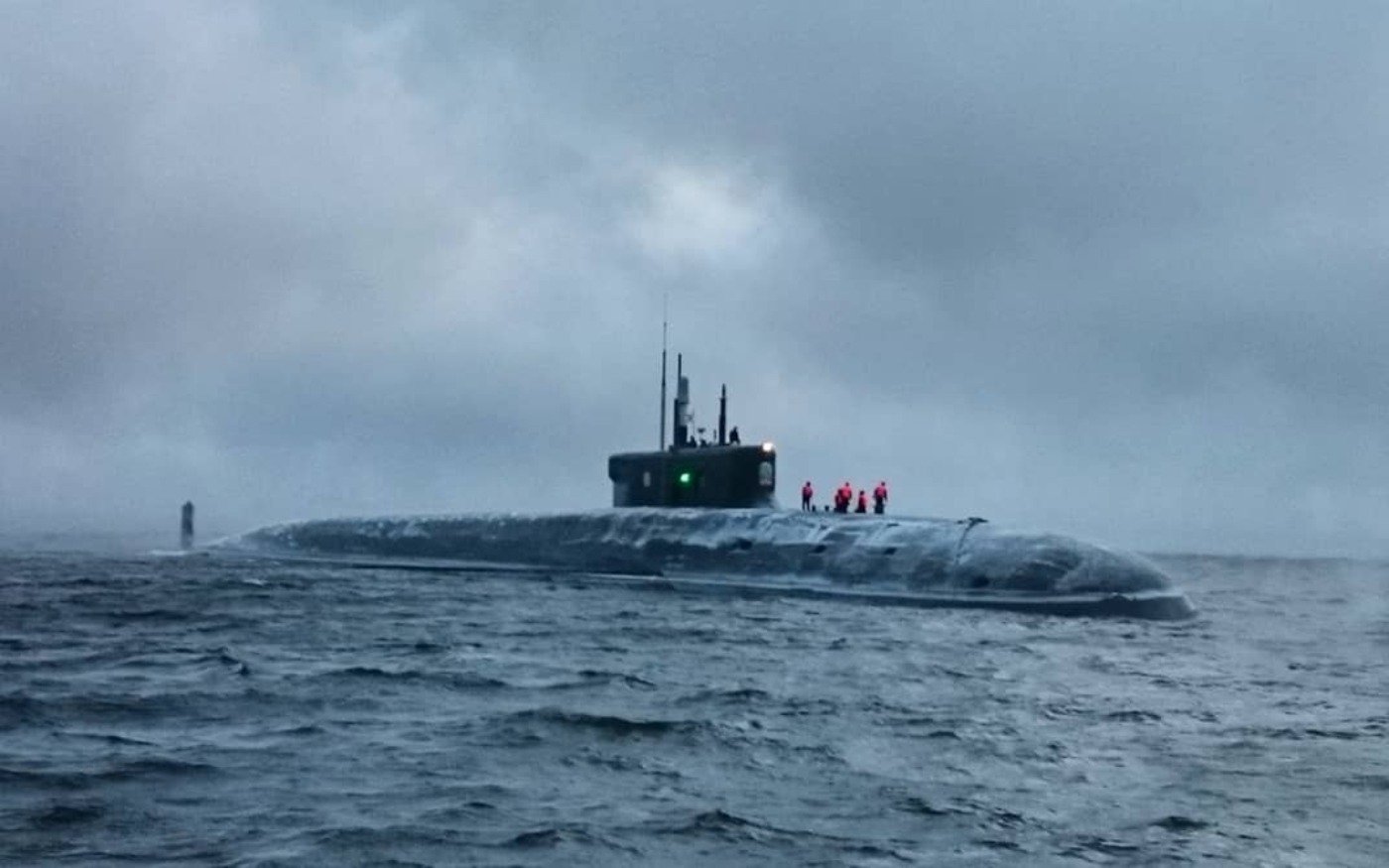Borei-K Class: This Might Be Russia's Most Dangerous Submarine Ever
Back in 2019, Russian state-media outlets first revealed that the Russian Defense Ministry was seeking a new Borei-K Class submarine variant to carry cruise missiles instead of ballistic ones.
Borei-K Class Submarine- What We Know Right Now: Moscow’s Project 955 Borei-class submarines were designed following the collapse of the USSR to replace the country’s older Delta and Typhoon boats. Designated by the North Atlantic Treaty Organization (NATO) as Dolgorukiy, the nuclear-powered ballistic missile submarines are much smaller than their predecessors.
Specifically, the Borei-class ships weigh roughly half as much as the Typhoon-class.
It notably took Russia sixteen years to construct and launch the lead ship in the Borei-class- the Yury Dolgoruky. Funding issues and other equipment delays pushed the submarine’s commission date to 2012, even though construction started way earlier in 1996.
However, this lead ship became the first Russian ballistic missile submarine commissioned since the Soviet era. For this reason, the Borei-class represents the modernization of the Russian navy. Following the Dolgoruky, subsequent Borei-class vessels have entered service under the Project 955 project- the Alexander Nevsky, Vladimir Monomakh and Knyaz Vladimir.
Perhaps one of the most glaring issues the Soviet Navy’s submarine fleet suffered from was suboptimal acoustics. To rectify this, the Borei submarines are less detectable to sonar than their predecessors. Each ship in the class was constructed with a hydrodynamically efficient hull for the sake of minimizing broadband noise.
Another enhancement incorporated into this class was the introduction of a pump jet propulsion system. Unlike bare propellers, pump-jets allow for higher speeds before cavitation occurs. As a bonus, pump-jets also improve a ship’s shallow water performance and maneuverability.
Even with these modifications, U.S. and other Western submarines were still considered to be more capable.

In terms of armaments, the smaller sized Borei submarines could really pack an arsenal. Each ship in this class can carry 16 missiles and some analysts believe newer variants could sport as many as 20. “The Bulava SLBM (designated RSM-56 in the START treaty), which is based on the Topol M design, is being fitted onto the Borei Class submarines,” according to Naval Technology. “These missiles were developed by the Moscow Institute of Thermal Technology and were launched on the Project 955 platform.”
The Bulava missile has a range of 9,500 km and can carry 6 MIRVs with a high blast yield. Notably, this missile possesses an astro-inertial guidance with Russian GLONASS satellite navigation system update.
Introducing the Borei-K variant:
Back in 2019, Russian state-media outlets first revealed that the Russian Defense Ministry was seeking a new Borei-K variant to carry cruise missiles instead of ballistic ones.
According to a report published by TASS news, the Borei-K project is to be completed sometime after 2017.
While information surrounding this new modified variant is limited, analysts believe the proposed model will function similarly to the American-made Ohio-class nuclear-powered cruise missile submarines in that these ships would be armed with cruise missiles instead of SLBMs.

The Ohio-class SSBNs (Ohio, Michigan, Florida & Georgia) are each capable of deploying up to 154 Tomahawk cruise missiles.
If the Borei-K does enter service as intended, the U.S. will no longer be the sole SSGN operator in the world.
About the Author: Maya Carlin
Maya Carlin, National Security Writer with The National Interest, is an analyst with the Center for Security Policy and a former Anna Sobol Levy Fellow at IDC Herzliya in Israel. She has by-lines in many publications, including The National Interest, Jerusalem Post, and Times of Israel. You can follow her on Twitter: @MayaCarlin.
All images are Creative Commons.


